Tradescantia ohiensis, commonly known as Blue Jacket, Ohio Spiderwort, or Smooth Spiderwort, is a resilient and attractive herbaceous perennial. Native to Eastern and Central North America, this plant thrives in a variety of environments, from roadsides and ditches to cultivated gardens. Its vibrant blue flowers bring a cheerful touch to landscapes.
One of its most distinctive traits is its blooming pattern-each flower opens in the morning and closes as the afternoon sun intensifies. Named after John Tradescant, the 17th-century gardener to King Charles I, this plant remains a favorite among gardeners for its low maintenance needs and ability to naturalize easily in garden beds or wildflower settings.
| Common name | Blue Jacket, Ohio Spiderwort, Smooth Spiderwort |
| Botanical name | Tradescantia ohiensis |
| Family | Commelinaceae |
| Species | ohiensis |
| Origin | Eastern and central North america |
| Life cycle | Perennial |
| Plant type | Herbaceous Perennial |
| Hardiness zone | 4, 5, 6, 7, 8, 9 |
| Sunlight | Deep shade |
| Maintenance | Medium |
| Soil condition | Clay |
| Soil ph | Acid |
| Drainage | Well-Drained |
| Growth rate | Medium |
| Spacing | 12 in. – 3 ft. |
| Harvest time | Summer |
| Flowering period | Spring |
| Height | 2 ft. – 3 ft. |
| Flower color | Blue |
| Leaf color | Blue |
| Fruit color | Green |
| Stem color | Green |
| Fruit type | Capsule |
| Leaf benefit | Edible |
| Flower benefit | Good Cut |
| Garden style | Cutting Garden |
| Uses | Meadow |
I. Appearance and Characteristics
Tradescantia ohiensis, commonly known as bluejacket or Ohio spiderwort, is an herbaceous plant species in the genus Tradescantia native to eastern and central North America. It is the most common and widely distributed species of Tradescantia in the United States, where it can be found from Maine in the northeast, west to Minnesota, and south to Texas and Florida. It also has a very small distribution in Canada in extreme southern Ontario near Windsor.
Distinguishing features of the species include glaucous leaves and stems, leaves forming an acute angle with the stems, sepals with hairs lacking glands which are confined to the apex if present at all, and a relatively tall habit (up to about 115 cm). Typical habitats for the plant include roadsides, along railroads, and in fields and thickets. Less typically it can occur in woods, and sometimes along streams. As with many species in the genus, it often forms hybrids with related species where they co-occur. More specifically, at least nine different species are thought to be capable of forming hybrids with T. ohiensis.
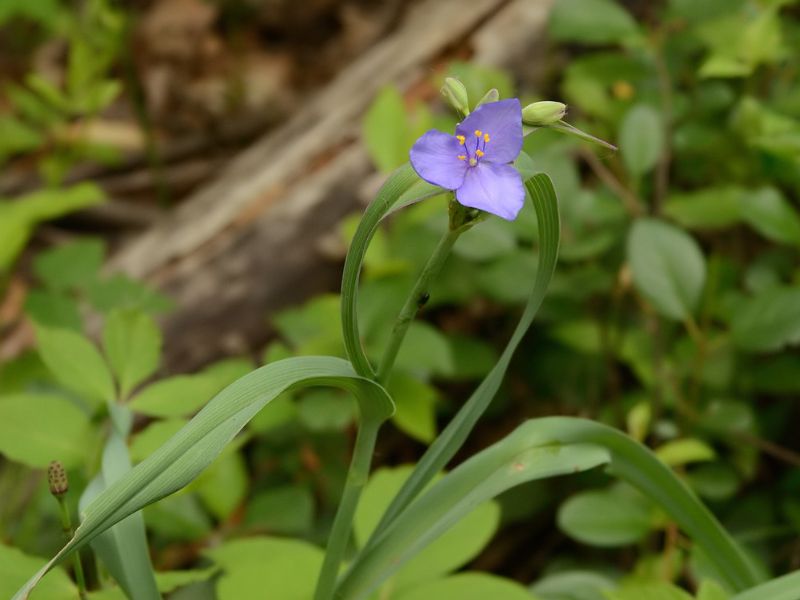
Ohio spiderwort has edible flowers and shoots.[1] Flowers and stems can be eaten raw, while the leaves can be cooked. Leaves of the plant are mucilaginous and can be used to soothe insect bites in a similar way to aloe vera.
II. How to Grow and Care
Sunlight
The ohio spiderwort loves light. Insufficient light will lead to overgrowth and yellow leaves, but intense light will burn plants. If it is over-shaded, the ohio spiderwort will also grow poorly, with slender leaves and small flowers, making it better to cultivate the plant in a semi-shaded place. If it is cared for indoors, place your plant in a bright location and move it to an outdoor, semi-shaded spot for a period of time every one or two months. This method is conducive to the plant’s accumulation of nutrients and growth.
Temperature
The ohio spiderwort is native to America and grows well at a temperature of 18 to 30 ℃. It doesn’t like the cold and frost of winter, meaning that its overwintering temperature needs to be kept above 10 ℃. Once the temperature drops below 4 ℃, the plant will enter a dormant state. At 0 ℃, the plant may be frozen to death directly. The ohio spiderwort prefers a humid environment and requires the relative humidity of the air in its growth environment to be between 60-75%. It is not resistant to drought or water-logging.
Watering
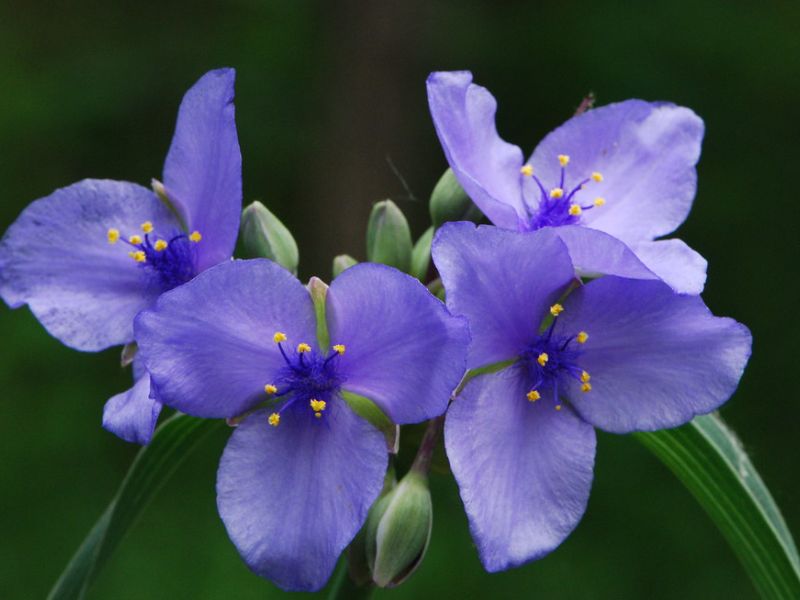
Thriving in its native habitat’s moist conditions, ohio spiderwort has adapted to require consistent hydration. This species is moderately drought-tolerant but performs best when the soil remains slightly moist, reflecting its preference for a balance between wet and dry environments. Watering should occur once every week to maintain this equilibrium. As an outdoor plant often found in gardens, ohio spiderwort benefits from mulching which helps retain soil moisture during its active growing season, thereby reducing the need for frequent watering.
Soil
The ohio spiderwort isn’t fussy when it comes to soil, and the plant can grow normally in both sandy and loam soil. With certain saline-alkali tolerance, it can also grow in mild saline-alkali soil, although it does best in neutral or alkaline soil. The ohio spiderwort likes fertilizer; it won’t grow well in poor soil, with slender plants that have no or few flowers. When it is cultured as a potted plant, perlite with good water permeability and drainage can be selected as its substrate, while sandy loam is also a good choice.
Fertilizing
Fertilize ohio spiderwort monthly during active growth in spring and summer with a balanced, water-soluble fertilizer at half the recommended strength. This promotes vigorous growth and enhances the plant’s hearty violet blooms. Refrain from fertilizing in fall and winter when growth slows. Over-fertilizing can harm ohio spiderwort’s delicate roots—moderation is key. Fertilizer choice should match ohio spiderwort’s nutritional needs without overwhelming. Always water the soil before applying fertilizer to prevent root burn.
Pruning
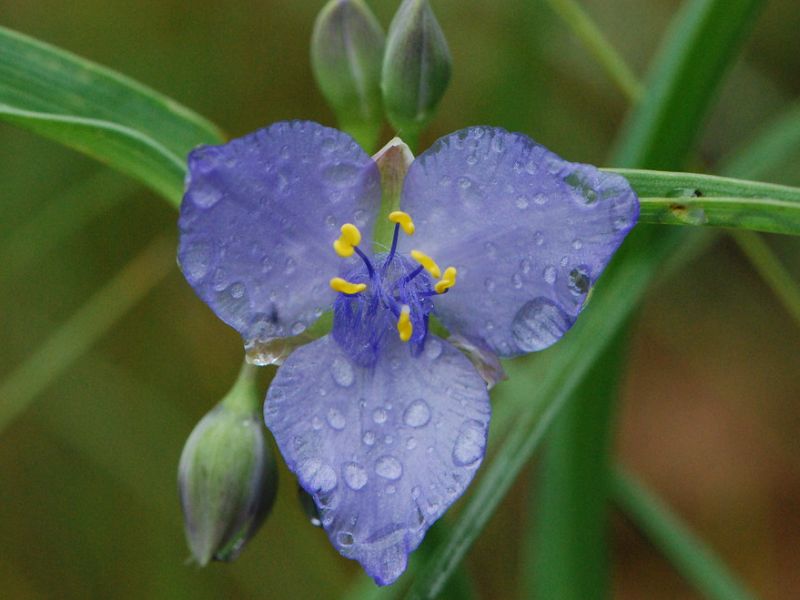
In order to keep its graceful plant shape and prolong its flowering period in the fall, it is necessary to consistently remove dense and diseased leaves. Old stems should be trimmed, and you should also maintain ventilation and light transmission, which will promote the growth of new tillers. After flowering, the residual flower stems, as well as any dead branches and leaves, should be cut off to promote the development of new flower stems.
Propagation
The ohio spiderwort can be propagated by offshoots and cuttings. Offshoot propagation is generally carried out before germination in early spring. Only vigorous and well-proportioned plants should be chosen as stock plants. Dig the plant out of the soil, remove the soil, brushing it off the roots with a brush, and then separate the root from the stock plant with a knife. Then, smear the wound with sulfur powder or plant ash, and dry it slightly before planting.
It is best to carry out cuttage propagation in the late spring or summer. Before cutting, substrates should be disinfected, and drugs should be applied to prevent the cuttings from harm by underground pests. The cutting should be selected from the main stem or a mature lateral branch. The base end needs to be cut flat from the stem node, and the top end from the leaf axils, and 2/3 of its leaves should also be cut off.
Cuttings need to be dipped in clear water for 1-2 hours to soak off the incision mucus, so as to facilitate faster rooting. The cutting depth should be 1/3 of the length of the cutting, and sufficient watering will be necessary after cutting. Keep the substrate moist, and the cutting will root in 10 to 15 days. After rooting, the water content should be gradually kept in control, and a thin liquid fertilizer should be continuously sprayed to promote a stronger and thicker root system.
Transplanting
Ohio spiderwort can successfully be transplanted from late spring to mid-summer (consider this S2-S4). Its preference for full to partial sunlight, combined with moist and loamy soil, ensures optimum growth. When moving this robust perennial, remembering not to plant too deep helps maintain its overall health.
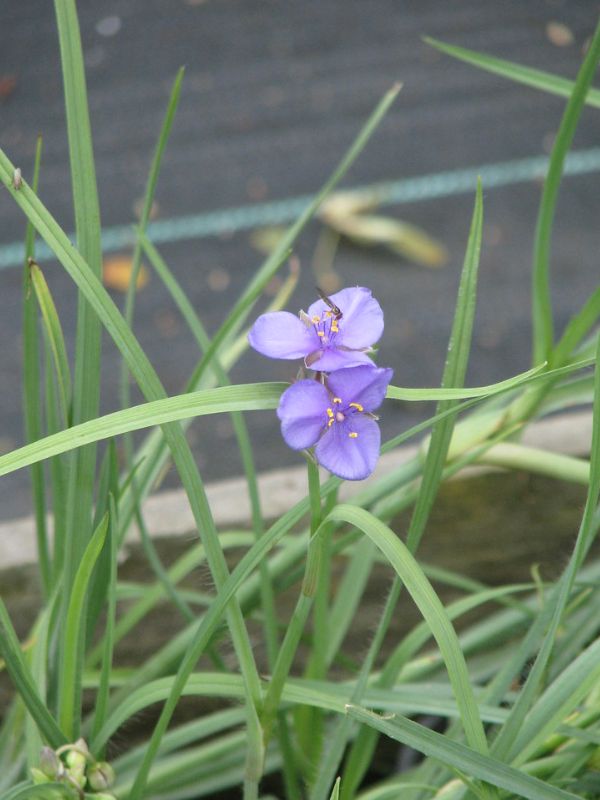
Repotting
Report Ohio spiderwort every 2-3 years in spring, as growth resumes. This hardy perennial reaches 2-3 feet, with upright form. Choose a container slightly larger than the root ball to encourage healthy growth. Post-repotting, water thoroughly and maintain consistent moisture without overwatering. A friendly reminder: Ohio spiderwort is resilient, making post-repotting care straightforward for a thriving growth.
III. Uses and Benefits
Ohio spiderwort is a species of flowering perennial which is planted in gardens for its beautiful flowers, adaptability to various growing conditions, and resistance to pests and disease. It is usually found in flower beds, floral borders, and meadow gardens.
IV. Harvesting and Storage

The ohio spiderwort flowers in the summer or early fall. It can be harvested at this time too by drying the flowers in the sun to retain their original bright color. The whole grass can also be cut for use as a medicine.
Find Where to Buy the Best Ohio Spiderwort (Tradescantia ohiensis)

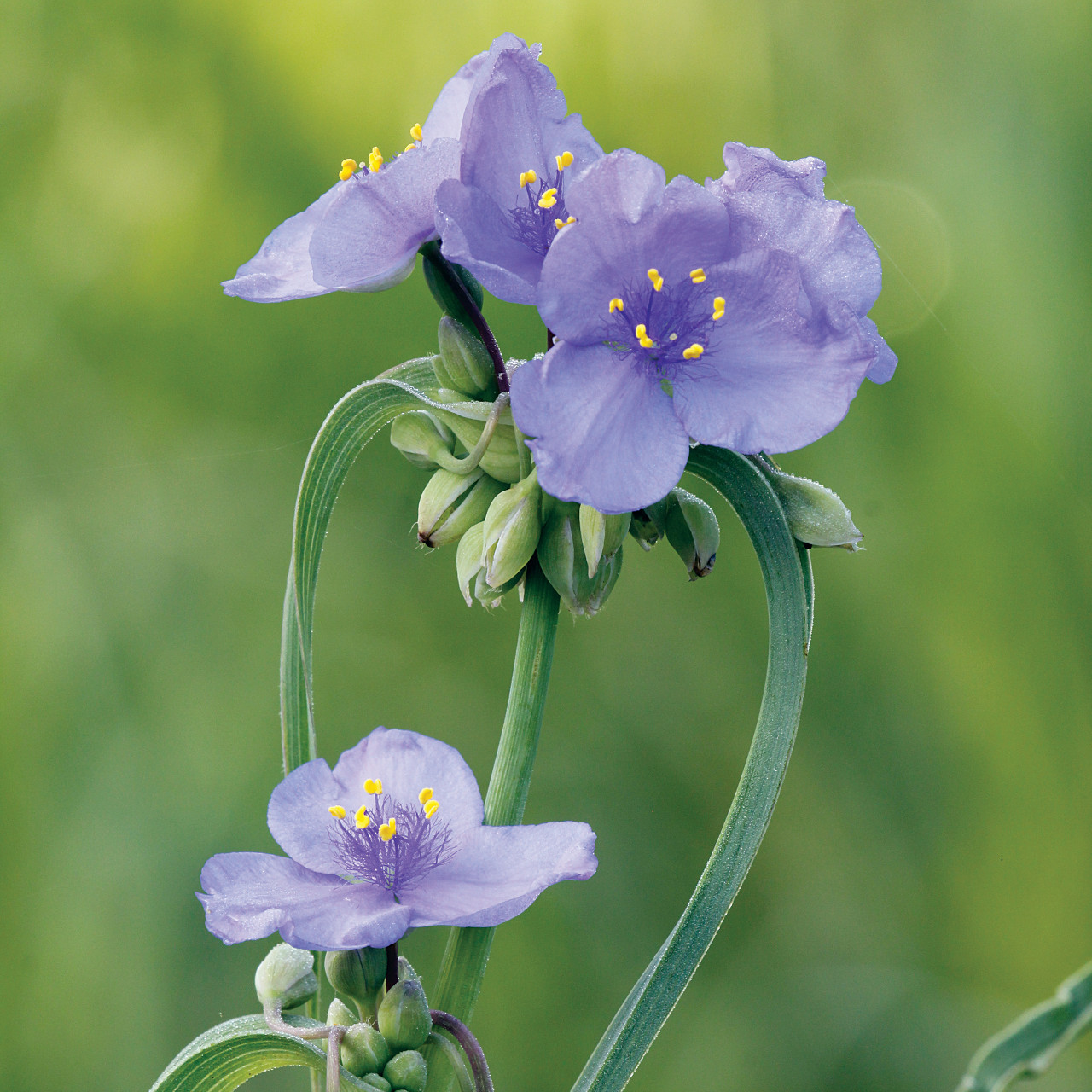



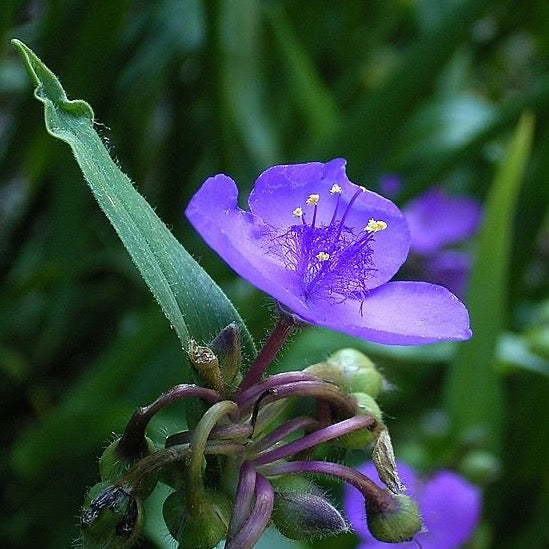












Leave a Reply